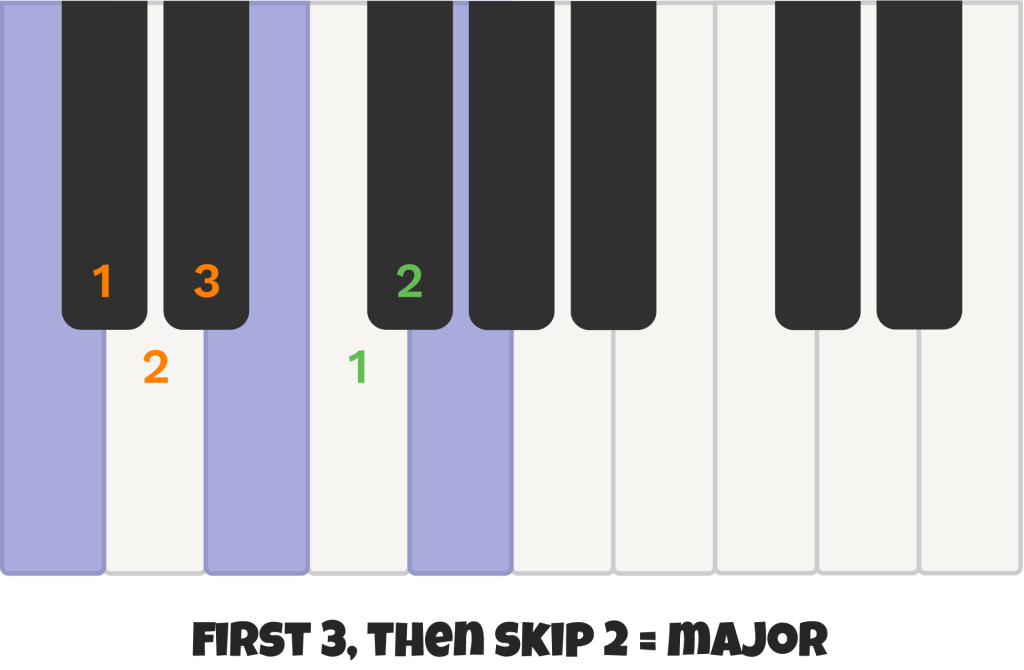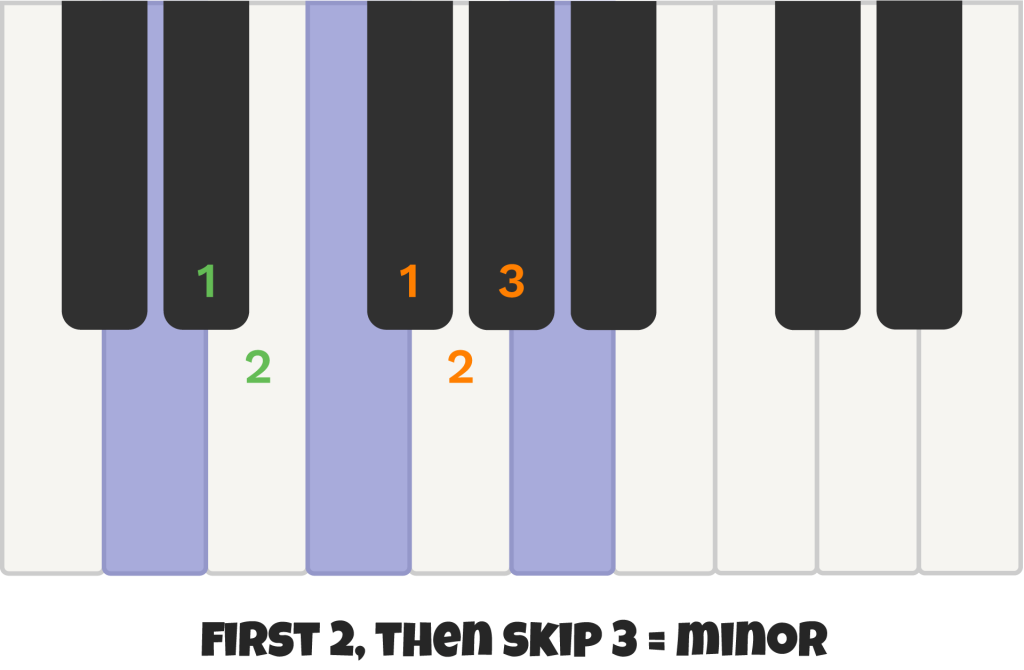Level
Chords are indicated with a capital letter, but sometimes there is an ‘m' next to it. That's because there are 2 types of chords.

Here’s the C chord. The keys of the chord are coloured light purple. There’s always one white key skipped between the keys of the chord. If you count not only the white keys, but also the black ones, you’ll see that three keys are skipped between C and E. While between the E and the G only two keys are skipped.
It is exactly the same with the G chord and the F chord. Three keys are skipped between the bottom two keys. While between the top two keys, two keys are skipped. All chords constructed in this way are called major chords.
For chords with a capital letter and an 'm' it is exactly the other way around. Here you see the Dm chord as an example. In the Dm chord, two keys are skipped between D and F, while three keys are skipped between F and A.
It is exactly the same with the Em chord and the Am chord. Between the bottom two keys, two keys are skipped. While between the top two keys, three keys are skipped. All chords constructed in this way are called minor chords. All minor chords get an 'm' next to the capital letter.
When you listen carefully, you can hear that the major chord sounds a bit different than the minor chord. Just play them a few times in a row. When you start playing more and more songs with chords, you’ll hear the difference better and better.
In major chords the word major is often omitted. So:
- The C major chord is often abbreviated to the C chord.
- While in minor chords the word minor is always used.



